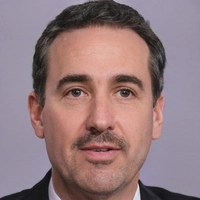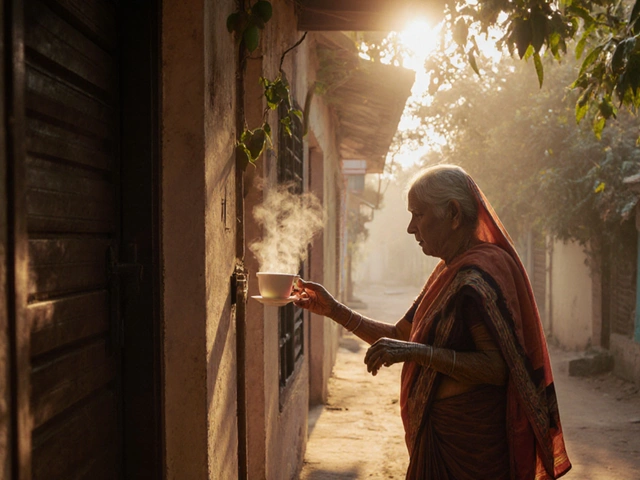Stage 4 cancer. Just saying those words can freeze a room. But is it actually worse than stage 3, or are the lines between the two not as clear-cut as people think?
If you or someone you care about has heard the words ‘stage 3’ or ‘stage 4’ from a doctor, your mind’s probably racing with questions. Let's get right to it—stage 4 means cancer has spread somewhere far from where it started. Stage 3, on the other hand, usually means the cancer is bigger or has reached nearby tissues or lymph nodes, but it hasn’t traveled far.
Here’s what really matters: cancer staging is how doctors figure out how serious the cancer is, what treatments might work best, and what to expect down the line. Understanding the difference can change how you look at treatment choices, side effects, and even day-to-day life. It’s not a number game—it’s about what’s really happening in your body and what you can do about it.
- Understanding Cancer Staging
- What Makes Stage 3 Different?
- Why Stage 4 Is a Bigger Challenge
- Treatment Options and What to Expect
- Coping Tips and Hopeful Stories
Understanding Cancer Staging
Cancer staging might sound complicated, but at its core, it’s just a way for doctors to describe how much cancer is in your body and how far it has spread. Think of it like a roadmap for your treatment plan—the higher the stage, the bigger the challenge.
Doctors usually use something called the "TNM system" to figure this out. That stands for:
- Tumor: How big is the main tumor?
- Nodes: Has the cancer spread to nearby lymph nodes?
- Metastasis: Has the cancer traveled to other parts of the body?
Stages go from 0 to 4. Stage 0 means things are just starting out, often called "in situ." As the numbers go up, it means the cancer is bigger or has moved farther. By the time you hit stage 4 cancer, it’s spread to places outside where it began—think lungs, liver, or bones for many cancers.
| Stage | What It Means | 5-Year Survival (All Cancers, Avg.) |
|---|---|---|
| Stage 0 | Cancer cells only in first layer, not grown deeper | Near 100% |
| Stage 1 | Small tumor, not spread to lymph nodes | 80-90% |
| Stage 2 | Larger tumor or spread to nearby tissues/lymph nodes | 60-75% |
| Stage 3 | Locally advanced, more lymph node involvement | 40-60% |
| Stage 4 | Cancer has spread to distant organs | 20% or less |
Bear in mind, those numbers are just rough averages—specific survival rates jump around, depending on the cancer type and how someone responds to treatment. But they give you a sense of how the stage can shape your outlook and options.
Doctors don’t just stage cancer once. They do it again if things change—like if the cancer comes back or moves somewhere else. Staying clued in about your stage means you can have smarter conversations with your care team and jump on the best treatments sooner.
What Makes Stage 3 Different?
Stage 3 is a tricky spot. The cancer's not just in one tiny place, but it hasn’t made the full leap to other organs either. Basically, this stage means the tumor has grown bigger than early stages and likely reached nearby lymph nodes or tissues, but it’s not wandering around the body just yet.
Doctors usually break down stage 3 even further, like stage 3A, 3B, and sometimes 3C, depending on the type of cancer. Each letter means a little more growth or spreading. For example, in breast cancer, stage 3B might mean the tumor has spread to the chest wall or skin, while in lung cancer, stage 3C points to more lymph nodes being involved.
Here’s what defines stage 3 compared to other stages:
- The tumor is larger and may have invaded nearby tissues.
- Stage 4 cancer is different because, by that point, the cancer has spread to distant organs. Stage 3 stays more local.
- Lymph nodes near the original tumor are often affected.
- Cancer is considered “advanced” but may still be called “locally advanced” since it hasn’t moved far from where it began.
One hopeful point—stage 3 can sometimes be tackled with a mix of surgery, chemo, and radiation. Some people see real progress or even remission. The plan can get aggressive, but that’s because the odds are still decent if the cancer hasn’t spread too far. When doctors catch it here, they often go all-in with treatment because there’s still a good chance to stop it from becoming metastatic. Every cancer type is different, though, so treatment plans can look totally different for lung cancer versus colon or breast cancer at this stage.
Knowing you’re at stage 3 isn’t great news, but it’s not game over. It means there’s work ahead, but also, there’s still room to fight—with options that could pay off in a big way.

Why Stage 4 Is a Bigger Challenge
When people hear about stage 4 cancer, it’s usually because that’s the point when the cancer has taken a big leap—from being just in one place, to setting up shop somewhere else in the body. That’s what doctors call “metastatic.” It’s not just in the lungs or the breast anymore; it might be in the bones, brain, or liver too. That’s what makes this stage so tough.
If you look at the numbers, the challenges become even clearer. Survival rates drop compared to earlier stages because treatment gets trickier. With stage 4, cancer isn’t just stubborn—it’s managed more like a long-term illness in many cases, not something that's usually curable. Here’s a quick look at typical five-year survival rates for some common cancers, according to the American Cancer Society:
| Cancer Type | Stage 3 (Five-Year Survival Rate) | Stage 4 (Five-Year Survival Rate) |
|---|---|---|
| Breast | ~72% | ~29% |
| Lung | ~25% | ~7% |
| Colon | ~74% | ~15% |
Why is this? At stage 4, cancer cells have broken off from the original tumor and traveled, which means doctors have to treat the whole body—not just one spot. This often means more aggressive or complex treatments: chemotherapy that goes everywhere in your body, targeted drugs, immunotherapy, or sometimes even new treatments through clinical trials.
It’s not just more medicine, either. It affects work, family plans, and everyday routines. Side effects tend to hit harder because treatments are stronger and go on longer. Daily choices—what to eat, when to rest—can feel like a full-time job.
"Stage 4 doesn’t mean giving up, but it does mean rethinking the battle. Treatments focus on shrinking tumors, slowing cancer, and giving people more time with good quality of life." — Dr. Lisa Cuddy, oncologist at a major US cancer center
If you or someone you care about is dealing with stage 4 cancer, here are a few things that can help make the load a bit lighter:
- Ask about treatment goals and options—sometimes less is more when it comes to quality of life.
- Stay open to palliative care. It isn’t just for the end—it's about easing symptoms right now.
- Get support, whether that’s from a counselor, a support group, or a close friend. It makes a real difference.
Stage 4 is tough, but it’s not hopeless. Medicine’s moving fast, and new options show up every year. Staying informed and connected with your care team can help you make the best calls, one step at a time.
Treatment Options and What to Expect
Treatment plans for stage 3 and stage 4 cancer look pretty different. With stage 4 cancer, the main issue is that it’s spread (what doctors call "metastasized") to other parts of the body. That means the focus is often on controlling the cancer and helping people live as well as possible, for as long as possible. With stage 3, there’s a better chance for aggressive treatments that can sometimes cure the disease or push it into long-term remission.
Here's how it usually breaks down:
- Stage 3 Cancer: Most times, doctors hit stage 3 with a mix of treatments. Surgery, chemo, and radiation all come into play. Surgery is often the first step—removing as much of the tumor as possible. Chemo (drugs that kill cancer cells) and radiation can shrink what’s left or zap any stray cells. Some cancers, like breast or colon cancer, might see good outcomes if the cancer hasn’t moved too far.
- Stage 4 Cancer: Surgery rarely cures this stage since the cancer has spread, so the main weapons are chemo, targeted therapies, immunotherapy, or sometimes radiation. It really depends on where it spread and how the body reacts. The goal is to keep the cancer from growing, relieve symptoms, and give people the best quality of life. Sometimes newer drugs or immunotherapies help tumors shrink for quite a while.
People always ask about odds and side effects. Here’s what the numbers look like for five-year survival rates, just to keep things realistic:
| Cancer Type | Stage 3 Five-Year Survival | Stage 4 Five-Year Survival |
|---|---|---|
| Breast | ~86% | ~31% |
| Colon | ~71% | ~14% |
| Lung (NSCLC) | ~32% | ~7% |
Those numbers are national US averages and will look different for everyone. They can change quickly with new treatments. But they do show why staging makes such a big difference in treatment planning.
- If you’re dealing with stage 3: Ask if there’s a shot at cure with surgery or combined therapies. Don’t be afraid to get a second opinion, especially for tricky cases.
- If you’re facing stage 4: Focus on what treatments can slow things down and keep symptoms in check. Palliative care doesn’t mean giving up—it helps manage pain, energy, and emotional health. Ask about clinical trials, because the newest drugs sometimes land there first.
The tough part: not everyone has the same path. Genetics, age, overall health, and even access to care can shift the picture. The one-size-fits-all idea doesn’t work here, so stay pushy, ask tons of questions, and find a care team that gets you and your goals.

Coping Tips and Hopeful Stories
Hearing “stage 3” or “stage 4” isn’t just a medical label—it can honestly knock the wind out of you. The shock is real, but you’re not the first to sit in that chair. While every journey is different, a few things help almost everyone get through the chaos.
First, tell your doctor everything, even if it feels minor. Sometimes people brush off symptoms or side effects, thinking they have to tough it out. That’s not how it works. Noticing things early means your team can help right away, which seriously makes a difference.
Support matters. Studies from places like the American Cancer Society show that patients with strong social connections feel less depression and handle treatments better. Bring someone with you to appointments, call or text people, and let them help with food, rides, whatever comes up. This is a time to lean on others, not go solo.
Everyday stuff helps more than people expect. Try to:
- Stick to a simple routine—eat and sleep at regular times.
- Move your body, even if it’s just a walk down the hall.
- Write things down, especially questions for your doctor.
- Cut yourself slack on bad days. There will be ups and downs.
Some folks say joining a group—online or in person—changed everything. Not everyone gets it, but people who’ve been there just do. Look for cancer-specific groups or ask your care team if your hospital offers anything nearby.
Now, onto the hope part. Survival rates for stage 4 cancer have improved for certain types. Melanoma, for example, saw a major jump in five-year survival rates thanks to new treatments like immunotherapy. A report from the National Cancer Institute says, “People are living longer with advanced cancer than ever before.”
The toughest times in my life were when I fought for normal days. And I got more of them than I ever expected — never underestimate yourself. — Dave F., stage 4 colon cancer survivor
Cancer is never fair. But numbers aren’t the whole story. There’s real hope in research, in medicine, and in the stories of people living years past what was predicted. No two outcomes are the same, but taking care of your mind and body makes a hard road a little smoother.






